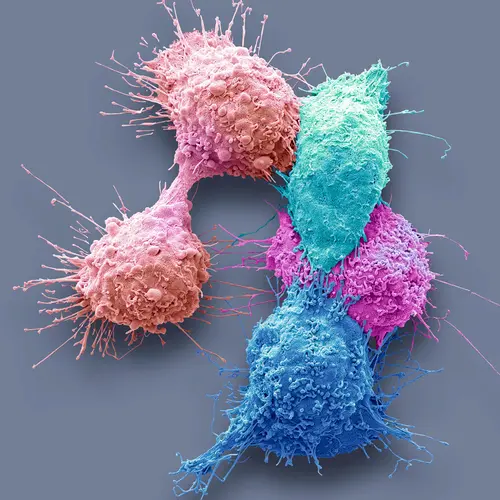Stage III ovarian cancer means the cancer is inside one or both of your ovaries or fallopian tubes. You also have cancer in the peritoneum, tissues that line the inside of your abdomen (belly) and pelvis. And you’ll have cancer cells on the surface of organs like your liver or spleen. It may also have spread to nearby lymph nodes. There are many sub-stages within this category:
- IIIA1: Cancer is also in the lymph nodes that lie behind the organs in your abdomen.
- IIIA2: Microscopic amounts of cancer are on the peritoneum. It may also be in lymph nodes near that area.
- IIIB: Your doctor can easily see peritoneal cancer that has spread to organs in your belly. It’s roughly 3/4-inch across or smaller. It might be in local lymph nodes, too.
- IIIC: Peritoneal cancer in your belly is larger than 3/4" across. You might also have it in nearby lymph nodes or on the outside of your liver or spleen.
Treating Stage III Ovarian Cancer
Most often, your doctor does surgery to remove the cancer. The type of tumor you have determines what surgery you get and the treatment before and after. The extent of the surgery will also depend on whether you want the option of becoming pregnant after treatment.
Invasive epithelial ovarian cancer: Your doctor will do surgery to learn more about where the cancer is spreading. They’ll take out your ovaries, fallopian tubes, uterus, and some tissue (omentum) in your abdomen. Your doctor wants to get out all the tumor they can see (they’ll call this debulking). This may mean they remove some of your intestine or other organs, like your liver, and suspicious lymph nodes if they have tumors.
After surgery, you’ll get a combination of chemotherapy drugs. If your body can’t handle surgery as a first treatment, you could begin with chemotherapy, then have surgery and get more chemotherapy. You might also get the targeted therapy bevacizumab (Avastin). You may take this with chemo at first, then by itself for up to a year.
Germ cell tumors: There are different types of tumors in this category, but dysgerminoma is common. If that’s what you have, the doctor may remove your uterus in a procedure called a hysterectomy. Along with that, they’ll take out your ovaries and fallopian tubes (this surgery is known as a bilateral salpingo-oophorectomy), plus any cancer in your pelvis and abdomen.
Another option is to only remove one ovary and the fallopian tube on that side (this is called a unilateral salpingo-oophorectomy). You’ll then get chemotherapy. This may also happen if you have a different type of germ cell tumor.
Treatment for other germ cell tumor types involves chemotherapy before and/or after a hysterectomy and bilateral salpingo-oophorectomy. The doctor also takes cancer out of your pelvis and abdomen. Or they could do another surgery after the first one to remove the cancer so that they can check for tumor cells.
You can also talk to them about signing up for a clinical trial to see if a new treatment being developed could help you.
Stromal tumors: For this cancer type, your doctor will remove the ovary along with the tumor. They’ll also remove other tissue if the cancer has spread. Most people get chemotherapy after surgery. But if you can’t tolerate chemo, you might get hormone therapy. Your doctor may also follow up with radiation to kill any cancer cells the surgery missed.
Making Sense of Survival Rates
Your general health, reaction to treatment, and other things make a difference in how long you live after diagnosis.
You may hear about 5-year relative survival rates. These show how likely it is that women with the same cancer type and stage as you are alive at least 5 years after diagnosis in comparison to women that don’t have that cancer.
These numbers don’t focus on your cancer stage but instead consider how much it spreads. Stage III cancer is categorized as distant, meaning it has spread to areas of your body that aren’t close to where it began. The 5-year relative survival rates for standard types of ovarian cancer tumors are:
- Invasive epithelial ovarian cancer: 30%
- Germ cell tumors: 74%
- Stromal tumors: 54%
Understanding Your Prognosis
The goal of treatment is to remove as much of your cancer as possible, but sometimes it comes back (the doctor will call this recurrence). If your ovarian cancer is at stage III when you’re diagnosed, there’s a 70% to 90% chance it’ll return.
But that isn’t a guarantee your cancer will come back. Your doctor will work with you to get the best outcome based on the type of cancer you have, the stage at which you were diagnosed, treatments that work for you, and your overall health.

